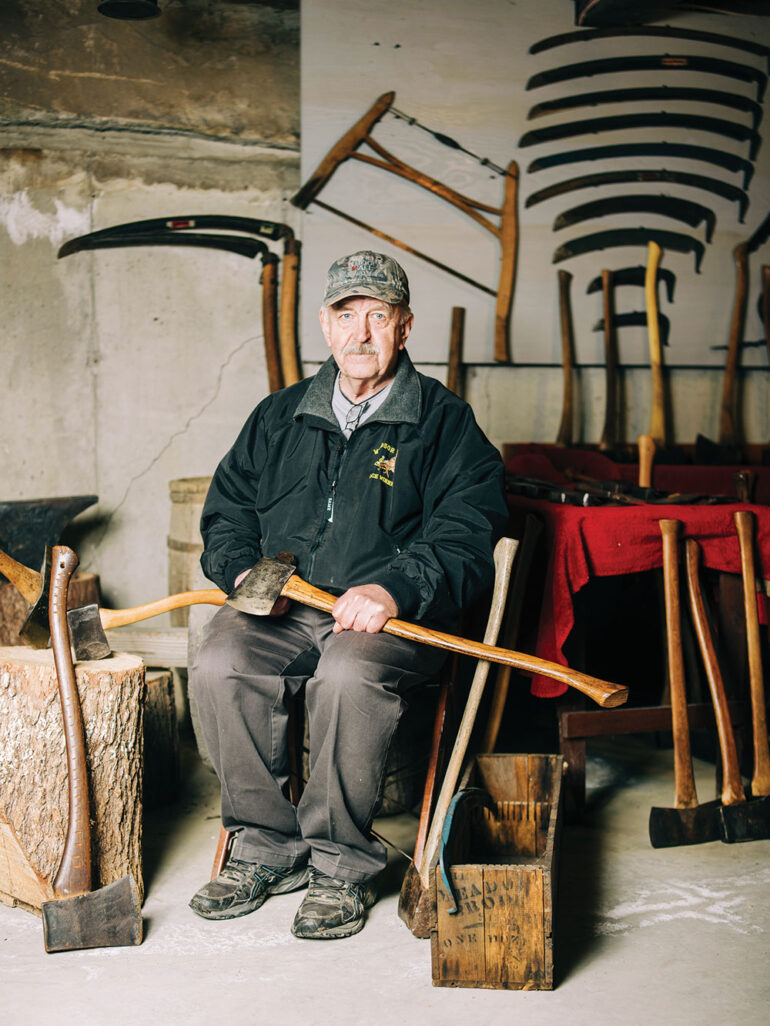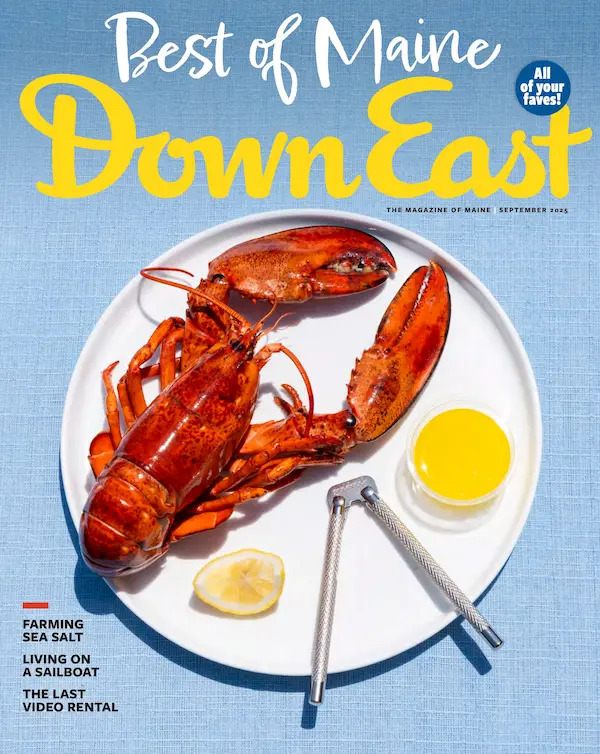By Sara Anne Donnelly
Photos by Dave Waddell
From our April 2025 issue
A little over 30 years ago, Howard Hardy visited a cousin who was chopping wood with an axe he said was made in Oakland. Intrigued, Hardy began keeping an eye out for other locally crafted cutting tools and bought a few on eBay and in antiques stores. Then, he started asking around town if folks had any Oakland axes. “It’s a fever,” Hardy says. “You meet a person who’s got five axes and you buy them and think, well, I guess I need more. Then someone says, ‘I’ve got some of that stuff in the barn.’ Bingo. Guess where it ended up?”
Hardy now has more than 300 antique and vintage Oakland-made axes and scythes, a rotating selection of which are displayed at the Oakland Area Historical Society, where he serves as lead historian and gives presentations on the town’s tool-manufacturing past. Through years of research, he’s sketched out a history that started in 1830, when Oakland companies began making tools for the town’s thriving logging industry and exporting them worldwide. By the late 19th century, as many as 21 factories with names like Emerson & Stevens, Spiller, and Dunn Edge Tool lined Messalonskee Stream, producing more axes and scythes than anywhere else in the world. Before chainsaws put the last factory out of business, in 1967, Oakland manufacturers had developed more than 300 versions of the “American Axe,” which had a thicker head and shorter handle than its European counterparts. “These axes were really quality pieces of workmanship,” Hardy says. “Works of art.”



His collection includes felling axes with long, narrow blades, wide broadaxes for hewing timbers into beams, stubby “sleeper” axes for shaping railroad ties, ice hatchets, miniature tools designed to fit in the suitcases of traveling salesmen, and a rare “President’s Hunting Axe” with an oak handle that unscrews to reveal a knife by Oakland maker John King. One just like it was given to Theodore Roosevelt when he passed through Waterville by train in 1902. “They say that when Roosevelt left, he waved the axe wildly out the window because he was so appreciative of it,” Hardy says. The president later wrote to King requesting the same model for his son.
Another prized possession came from a widowed parishioner at Hardy’s church, who invited him to take a look at an axe in her garage. A rare 19th-century tool with the initials BFD, for the logging outfit Berst-Forster-Dixfield Division, where the woman’s husband had worked, protruding from its head, it was used to mark log ends during river drives. When Hardy saw it, he thought, “Oh, this sucker’s coming home with me.”




